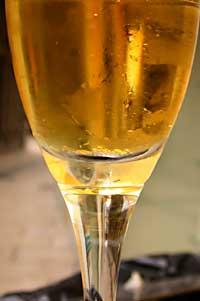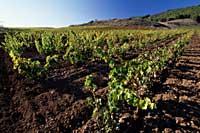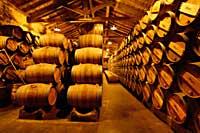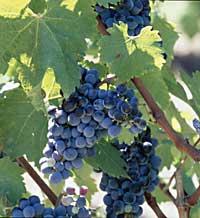Wine: ancient art, new science

For this biochemical process to occur, the participation of a yeast is essential. The yeast is called Saccharomyces cerevisiae and formerly lived in the robledales. A day of fortune, however, the yeast and the grape joined. It has not been possible to know exactly how it happened, but it is to assume that the nature of the vine would have something to see.
Surely the vine was cooked with an oak, and there it would begin to turn and roll, surrounding the oak. Then the yeast was approaching the grape grain.
Biochemistry is the blame
But yeast cannot be still and... now comes the turn of biochemistry: yeast enzymes influenced the grape juice. The result did not go unnoticed to the man who collected the fruit of the vine! In fact, the enzymes degrade and transform the sugars of the must, resulting in ethyl alcohol and carbon dioxide. This is called alcoholic fermentation. The consequence is impressive, since the grape juice, that sweet and slow must, becomes wine.
You cannot leave everything in the hands of nature and man has also wanted to participate in the process. Because the production of wine is nothing else: control and care for the processes that occur in nature. For example, although the grape grain itself has yeast, yeast is currently used in the laboratory for the production of wine, so that the process is more effective. In addition, the temperature is carefully controlled.
But in alcoholic fermentation, in addition to ethyl alcohol, many other substances are generated. Among them is the malic acid, which due to its acidity is considered erroneous. Therefore, by malolactic fermentation, the malolactic acid is transformed into lactic, thus disappearing the acid flavor.

The causes of malolactic fermentation are lactic bacteria. These bacteria are smaller than yeasts and, like yeast and fungi, are found in the bark of adult specimens. However, depending on the type of wine you want to obtain, malolactic fermentation stops before or after. For example, in red wines the reaction is allowed to advance. On the other hand, in white wines, the same is not played to obtain dry and fresh white wines as for those who age well. However, it is clear that chemistry and microbiology go hand in hand in the fermentation of wine.
Retrospective Retrospective
Chemistry also helps in many other aspects of wine. For example, historians have used chemistry to know that Tutankhamon drank red wine.
Tudela XVIII. Pharaoh of the dynasty and a. C. C. He commands in Egypt in 1333-1323. He died young and his body was confined in a tomb filled with jewels and gold. Among the jewels, they also left amphoras full of drink and food.
Now, one of these amphoras is in the Egyptian Museum of Cairo and a group of researchers from the University of Barcelona have analysed the traces that are inside. Undoubtedly, the amphora kept the wine and bears the name of the winemaker: Cha. However, it does not indicate the type of wine it was and for its clarification the acids have been analyzed.

The tartartaric acid they have found in Anfora has confirmed that it kept the wine, which only appears in the products from the grape. However, thanks to another acid, sirínico, they have known what type of wine was. This acid is the derivative of malvidine, one of the main substances that gives color to red wine. In addition, it seems that for the ancient Egyptians the color of the wine had a special meaning, since they related it to the color that the river Nile collected in the annual floods.
Genetics and paleobotany
Scientists not only use chemistry, but also genetics to solve ancestral issues. For example, genetic studies have found that the fact that the grape is white or black depends on a single gene.
The research has been carried out in Japan and, according to scientists, the white grape is a mutant of the ancient grape. That ancient was extremely black and the current black grape is a consequence of a mutation of white. In this second mutation partially recovered the production capacity of anthocyanin, which makes the crust of the grape black.

On the other hand, they have used paleobotany to know when they began to care for the vine. In fact, the wild vines of the genus Vitis were extended by the temperate regions of the northern hemisphere, but only one is suitable for winemaking: Vitis vinifera.
Paleobotanical studies indicate that about 6,000 years ago Vitis vinifera began to be cultivated in the current area of Iran. However, the oldest remains of the wine have been found in a mural of 7,000 years ago. However, scientists do not know whether this wine was a result of spontaneous fermentation or a controlled process.
In any case, it is considered that viticulture was developed jointly with agriculture. Little by little, men and women have been learning to control and improve the wine sector and have had the help of science. Now, in addition, medicine has also looked at wine and doctors have recognized that moderate consumption of wine is beneficial. So good degizula!
Published in 7K.
Buletina
Bidali zure helbide elektronikoa eta jaso asteroko buletina zure sarrera-ontzian











